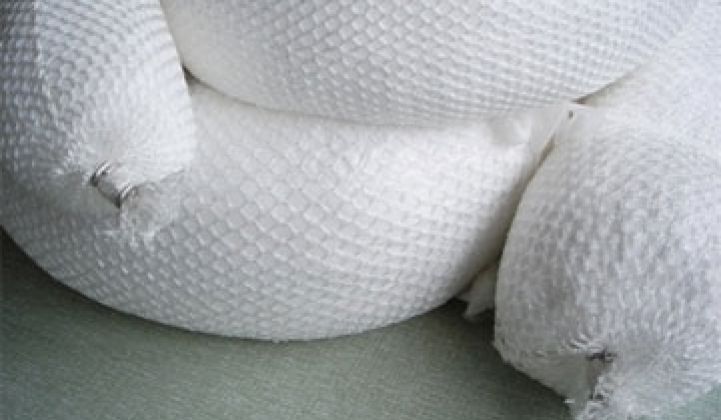Alumni from the Gulf oil spill will be in your car soon.
General Motors has figured out a way to make components such as air dams and water deflectors from the equipment deployed to mop up oil in the Gulf of Mexico.
"As early as next week, we will be making parts out of the absorbent booms from the Gulf," said John Bradburn, of GM's Global Environmental Programs department, last week.
Absorbent booms are those puffy, floating plastic tubes that look like dental cotton grown to gigantic sizes. They absorb oil but repel water; GM and its partner GDC essentially clean the material, recycle it, and then produce car parts that take advantage of its hydrophobic nature.
The effort is one element of an overall recycling and reuse strategy put in place by the auto maker. GM has a 90 percent recycling rate with the waste generated at its 140-plus manufacturing facilities; 69 facilities send nothing at all to landfills, he said. The goal, which GM is close to achieving, is to make 50 percent of the facilities zero-landfill sites.
Overall, GM says it has cumulatively generated $2.5 billion in revenue since 2007 as a result of reuse and recycling. Between 2005 and 2009, water consumption dropped by 35 percent at the company's manufacturing facilities. Some investors see recycling as one of the next frontiers in green.
A substantial portion of the work revolves around devising car parts from recycled materials. Another GM supplier, Federal Mogul, has figured out a way to turn cardboard into sound absorbers. Using recycled cardboard cuts GM's costs by 25 percent to 45 percent, because GM supplies some of the raw materials and is able to avoid landfill fees. Old tires also get refashioned into sound-dampening material. The seats in the Volt? Soy.
"The performance specifications are very tight in automotive," Bradburn said. Hence, most of the components from recycled parts are passive, rather than active, components. The air inlet panels on the Chevy Impala, for instance, come from old bumpers. Paint sludge gets melted down to become part of the plastic soup used to pack shipping containers.
Ford and others have similar programs.
Along with car parts, GM also recycles pieces of the factory itself. At one facility, the old membrane roof was removed and recycled into a new version of same roof.
"We hope something like this can become a best practice for the construction industry," he said.



